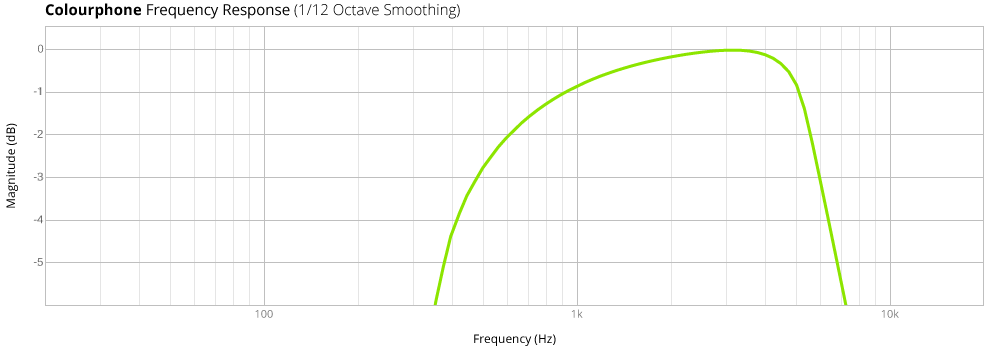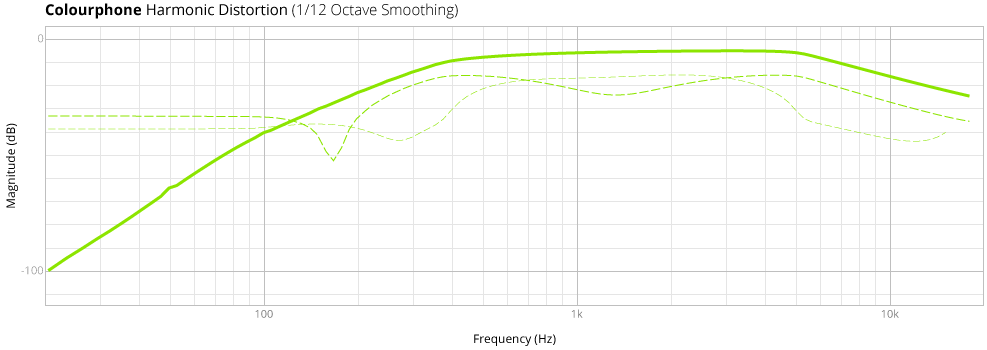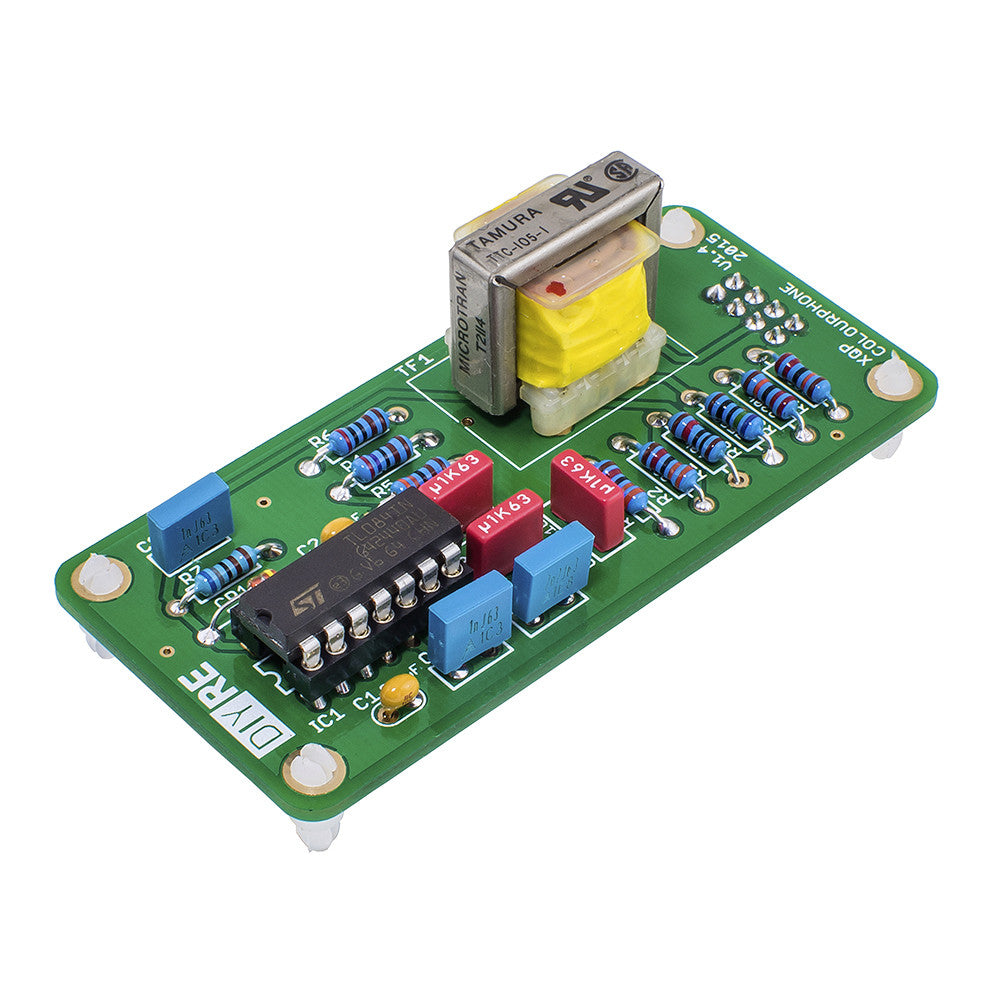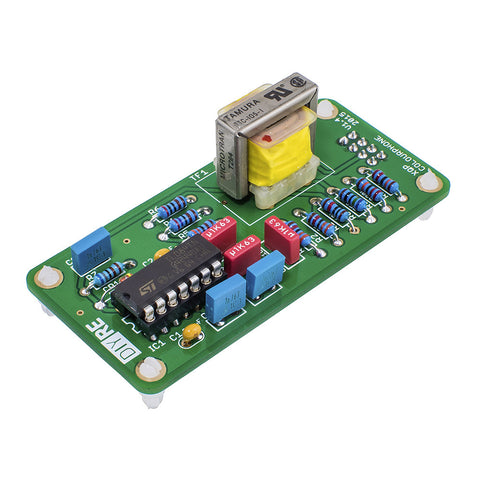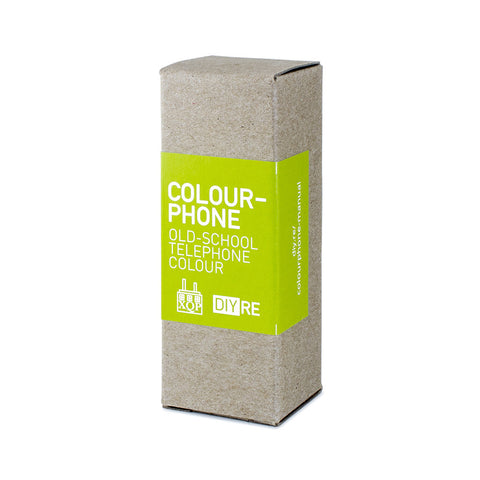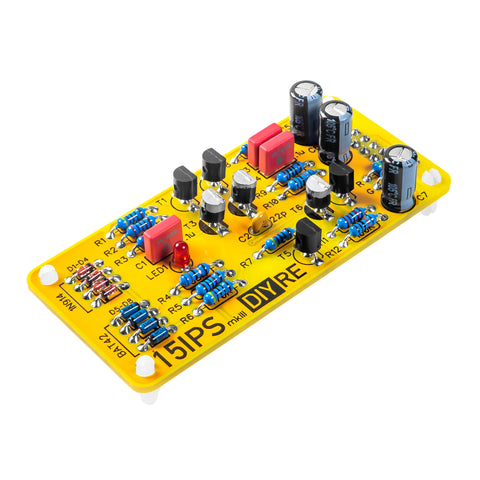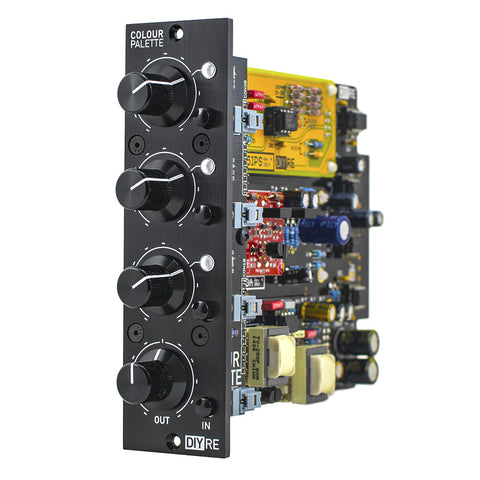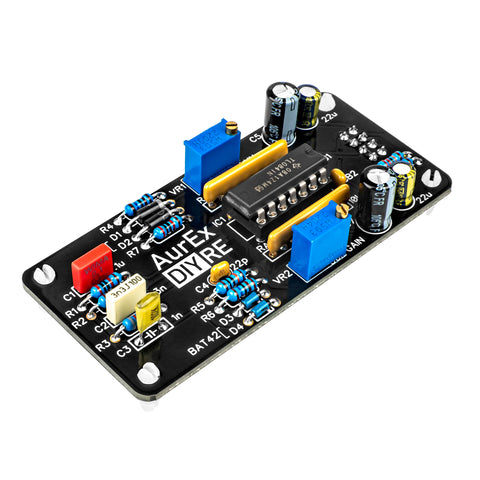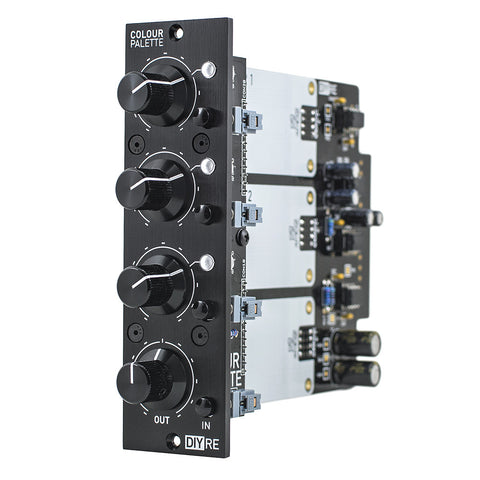XQP Audio
Colourphone Telephone Distortion Colour
$50.00
- Full Kit
- Step-by-Step Guide
- Supported
- $50 Repair Policy
- Beginner
One theory about why older records sound so great is that back in the day of all-analog studios, every signal traveled through multiple stages of analog circuitry before hitting tape. Well how about thousands of miles of analog circuitry?
XQP Audio's Colourphone packs the sound of a continent's worth of copper, transformers, speakers, and microphones into a Colour module. Through aggressive distortion and filtering, the Colourphone recreates the nasty, tinny sound of pre-cellular telephony. Use it on it's own for a perfectly dialed-in telephone effect or blend it with the dry signal for added presence.
FEATURES
- Telephone filter and distortion Colour
- Compatible with the Colour 500-Series Palette
- Full, step-by-step assembly instructions
SAMPLES
See audio tab for more samples.
Audio
The samples below demonstrate the Colourphone with the Colour Palette's input control set to 1 o'clock.Design Notes
If you've tried creating a telephone sound by dialing EQ, you'll find it lacking in certain sterling qualities that the phone system supplies in addition to bandwidth limitation. The Colourphone was designed to duplicate the essential circuitry of a telephone and its network. When you make a phone call, the signal is going through a telephone at one end, a telephone at the other end, the little-bitty speakers and marginal microphones employed in each, several sets of electronics at the phone company and its various central offices scattered about, and countless miles of copper (and possibly other more exotic methods of delivery and their associated equipment, but let's stop talking about this).
The basic essence of the telephone sound, at least from the standpoint of what the telephone equipment purposefully does, is a bandpass filter that passes audio between about 400Hz to 3.5kHz, and a diode clipper to elegantly limit the dynamic range. The Colourphone includes carefully crafted pro audio versions of these circuits. It also includes a nice yellow telephone transformer to help things along.
During the design process, Peterson suggested a rearrangement of a couple of things to better fit into the Colour design parameters (because I was too lazy to read them). The result was even more telephonic. One of the distinctive characteristics of telephone sound is a tearing of sibilants. The Colourphone now achieves this state of audio nirvana, having had its various parts rearranged, thanks to Peterson's diligence. Sometimes it pays to obey the rules. And telephone companies historically have been sticklers for rules, and here we are now trying to emulate their desirable sound.
In use, you might want to do a bit of further EQ to achieve a tinnier sound, but that is a matter of taste. And of course, telephone mic and speaker quality varies from bad to really bad, so everyone's idea of what really sounds like a phone call is going to differ. If you really want to achieve total realism, my recommendation would be to fill a 10-slot rack with Colour Palettes - each featuring three Colourphone modules - and then turn them all up full blast.
-Dane Tate, XQP AudioResources
